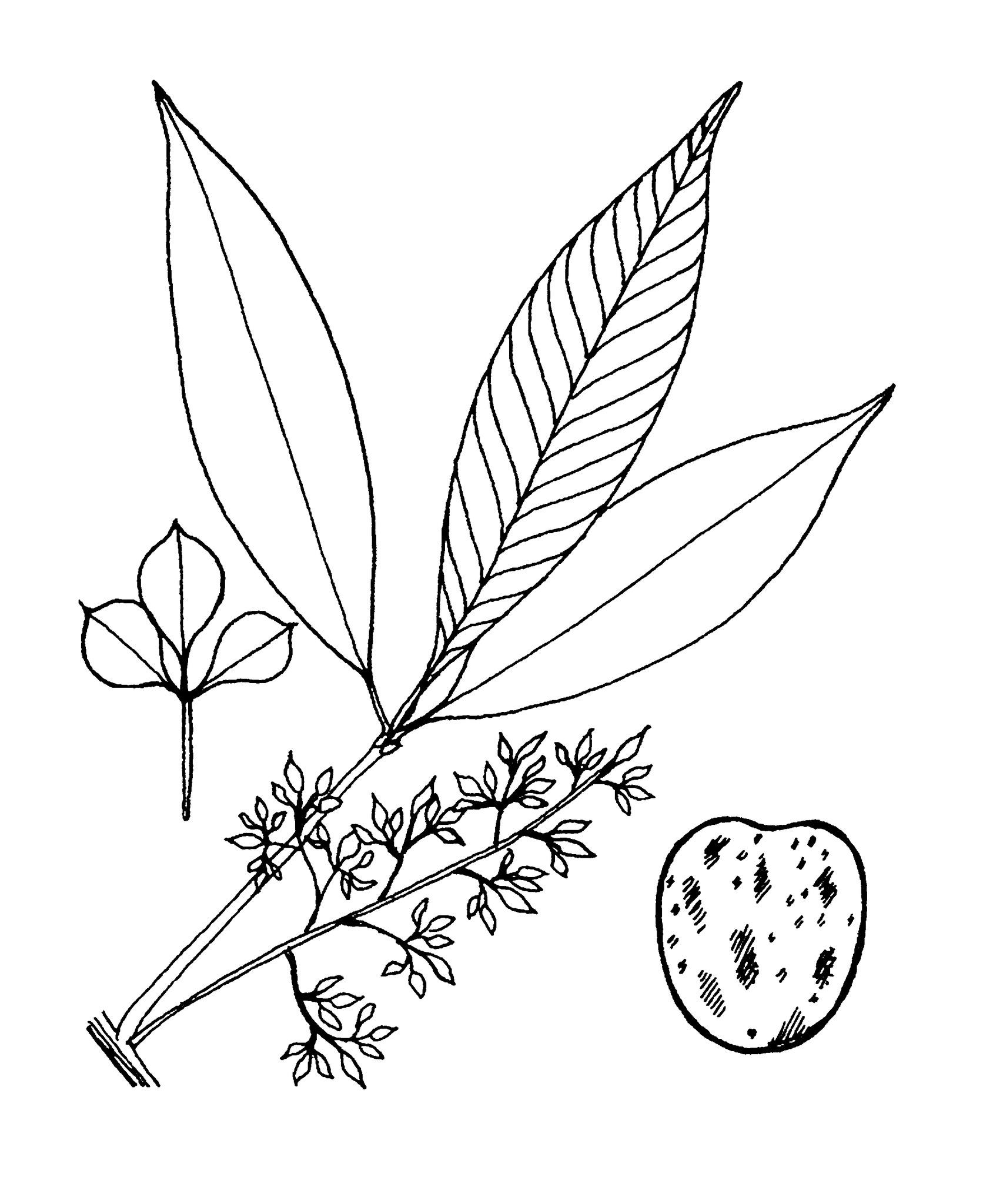
Derived from the Guyanan name for the Rubber Tree.
Trees, evergreen, perennial, male and female flowers on the same plant; stems and foliage with white latex. Indumentum of simple, multicellular hairs. Stipules entire, inconspicuous, soon shed. Leaves alternate, stalked, with 3 leaflets, penninerved, glands 2 at leaf stalk apex; margins entire. Inflorescences axillary, paniculate, solitary, bisexual and androgynous, with flowers in bracted clusters. Male flowers stalked; calyx lobes 5, edge to edge, partially fused; petals absent; disk of 5 free or united glands; stamens 5-10, filaments fused into a column. Female flowers stalked; calyx lobes 5, edge to edge, partially fused; petals absent; disk minute or absent; ovary 3-4-chambered, ovules 1 per chamber; styles 3-4, free, simple or rarely divided into 2. Fruits capsular, dehiscent, 3- or 4-lobed, surface smooth.
9 species in S America, 1 species naturalised in tropical Qld. 1 species is commonly cultivated for rubber production or as a novelty.
Cuttings or seeds.
Trees with white latex; leaves with 3 leaflets, glands 2 at leaf stalk apex.
Seibert (1947), Schultes (1956), Radcliffe-Smith (1987, 1996).
Source: (2002). Euphorbiaceae. In: . Horticultural Flora of South-eastern Australia. Volume 3. Flowering plants. Dicotyledons. Part 2. The identification of garden and cultivated plants. University of New South Wales Press.
